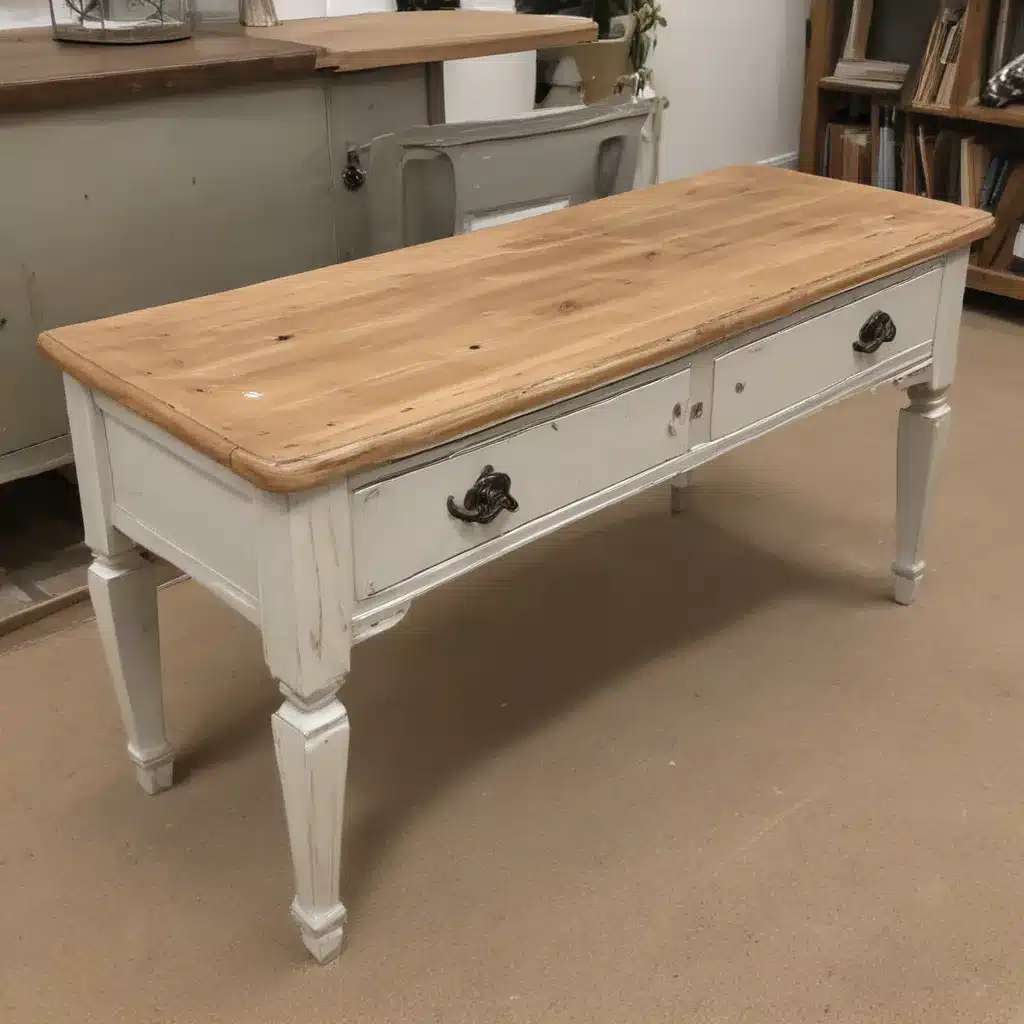
As an experienced home renovation specialist, I’ve seen countless examples of how a little care and creativity can breathe new life into old furniture. Whether it’s a beloved family heirloom or a thrifted find, there are so many ways to revive and reimagine tired pieces to suit your modern home.
Now, this might seem counterintuitive…
Furniture Restoration
Repair Techniques
The first step in any furniture restoration project is assessing the condition and determining the appropriate repair methods. With collectible or sentimental pieces, the goal is often to maintain the existing integrity and patina. Dan Fink, an interior designer in New York, advises that “there are certain pieces that maybe come with a provenance, where it’s more about maintaining the integrity of its current state.” This could involve reconditioning the wood, polishing metalwork, or simply replacing worn components like leather or drawer linings.
For furniture in more dilapidated condition, restoration can involve more extensive work. Reupholstering is one of the easiest ways to dramatically change the look of an upholstered piece. Designers often choose fabrics that complement the original spirit of the furniture, or they use bold, statement-making textiles to create something entirely new. Beyond the fabric, the underlying cushions and tufting can also be adjusted to fine-tune the comfort and aesthetics.
For solid wood furniture, stripping and refinishing the surface is a common technique. This involves removing the existing finish with chemical strippers and abrasives, then restaining or painting the piece in a fresh color. Patrick Mele, a designer in Greenwich, Connecticut, says he often uses paint to give antique pieces a “new modern and minimalist sensibility while still nodding to the past.”
Material Selection
When it comes to materials, the options are endless. Beyond the traditional stains and lacquers, designers are increasingly incorporating textured wallpapers, decorative trims, and even unexpected elements like pennies, buttons, or hardware to create one-of-a-kind pieces. Rachael Rosenblum of Double R Design in Brooklyn has even used techniques like cutting wood panels into contemporary shapes or extending and redesigning arms and legs to completely transform the look of a piece.
Sustainability Considerations
Environmental Impact
One of the best aspects of furniture restoration is its inherent sustainability. By repurposing and reviving existing pieces, you’re not only saving them from the landfill, but you’re also reducing the demand for new furniture production. This helps minimize the environmental impact of manufacturing, transportation, and disposal.
Cost-Effectiveness
Restoring old furniture is also a far more cost-effective solution than purchasing brand-new pieces. With a little elbow grease and some creative vision, you can often transform thrifted or inherited items into something that looks and feels completely custom, for a fraction of the price of retail furniture.
Emotional Value
Beyond the practical and environmental benefits, restoring old furniture can also hold immense emotional value. Giving new life to a family heirloom or a beloved piece from your past can imbue it with cherished memories and a sense of history. This personal connection can make a restored piece feel even more special and meaningful in your home.
Furniture Design Principles
Timeless Aesthetics
When approaching a furniture restoration project, it’s important to keep timeless design principles in mind. Aim for classic silhouettes, high-quality materials, and neutral color palettes that will stand the test of time. This will double-check that your revived piece seamlessly integrates with your home’s overall aesthetic, rather than feeling like a trendy one-off.
Functional Adaptability
Another key consideration is versatility and adaptability. Can you repurpose the piece for a different function? For example, Dan Fink once used an antique French desk as a bedside table, and Patrick Mele transformed garden urns into lamps. Thinking beyond the original purpose can breathe new life into a piece and make it a more functional and valuable addition to your home.
Personalisation Opportunities
Furniture restoration also provides a unique opportunity to infuse your personal style and creative flair. Whether it’s a bold paint color, a custom stencil design, or the addition of unexpected decorative elements, the customization process allows you to make each piece truly your own.
DIY Furniture Transformation
Project Planning
When embarking on a furniture restoration project, it’s essential to start with a clear plan. Assess the current condition and determine the appropriate repair techniques. Gather all necessary supplies, from sandpaper and paint to upholstery materials and hardware.
Repair Strategies
Depending on the piece, your repair strategy may involve structural reinforcement, surface refinishing, or reupholstering. Approach each step methodically, taking the time to properly prepare the surface, apply finishes evenly, and double-check that a high-quality end result.
Upcycling Inspiration
Don’t be afraid to get creative and think outside the box. Upcycling techniques like painting, stenciling, adding textured elements, or repurposing the piece for a new function can transform even the most tired old furniture into a showstopping centerpiece.
Furniture Care and Maintenance
Preventative Measures
Once you’ve breathed new life into a piece, it’s important to take steps to protect your investment. This may involve regular dusting, conditioning the wood or upholstery, and addressing any minor issues promptly to prevent further damage.
Troubleshooting Common Issues
Even with the best care, furniture can sometimes encounter problems like scratches, fading, or structural wear. Be prepared to troubleshoot these common issues, whether it’s through touch-up paint, reupholstering, or more extensive repairs.
Extending Furniture Lifespan
By prioritizing preventative maintenance and addressing problems early, you can significantly extend the lifespan of your restored furniture. This not only preserves your investment but also aligns with the sustainable ethos of furniture restoration.
In conclusion, the beauty of furniture restoration lies in its ability to breathe new life into old, overlooked pieces. By leveraging a combination of repair techniques, creative design, and thoughtful care, you can transform tired furniture into cherished, one-of-a-kind treasures that will elevate the style and sustainability of your home. So don’t be quick to replace – embrace the joy of restoration and let your furniture shine.
Example: Luxury Home Renovation Project 2023
















